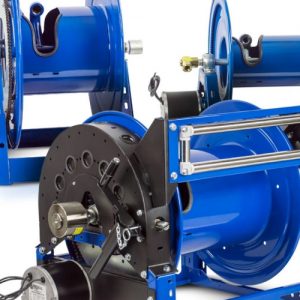Hose reels are highly beneficial devices in any industry where hoses are used. They are applied in aviation, the oil industry, robotics, and the agricultural sector. Garden hose reels are the most commonly applied types of hose reels in most households. For instance, auto garden hose reels are used for cleaning and watering purposes. In addition to the many applications, these devices also come in a wide range of styles. They can be categorized based on the hose reel retraction technique.
Types of hose reel retraction techniques
Hose reels come with a wide range of retraction methods. Most of the time, these methods define the various types of hose reels. They also influence how these products function. Below are some retraction methods for hose reels and how they work;
1. Hand cranking
Hand cranking is the simplest and most popular form of hose reel retraction. This method is mostly manual. In this technique, the hose is unwound from the hose reel by working the hand crank. As the crank turns, the hose is pulled from the hose reel. When you are done using the hose, you can get it back on the hose reel by turning the crank in reverse. In this case, as the hand crank turns, the hose will recoil onto the reel.
2. Spring-driven retraction
Spring-driven hose reels use a spring retraction mechanism. Here, you do not have to put any manual effort into retracting the hose as the process is automatic. This technique works so that when you pull the hose, pressure is applied to the springs.
When you release the hose, the pressure eases, and the hose is automatically retracted to the reel. For this reason, spring-driven hose reels usually come with a lock mechanism that helps keep the hose from retracting when you are using it. Hoses using this mechanism are generally low maintenance and easy to use.
3. Motor-driven retraction
The motor-driven retraction technique uses a motor. The motor is usually attached to the hose reel. With this retraction technique, you do not need to apply any physical effort when retracting your hose. Additionally, hose reels that use this technique are safe to use in any environment. It is also worth mentioning that the market features a wide range of motor designs, like electric, hydraulic, and pneumatic motors.
The different types of motors operate differently. For instance, in electric motors, the retraction is dispensed by pulling on the hose. On the other hand, pneumatic motor-driven hoses use compressed air to operate the hose. Motor-driven hose reels use mechanical energy generated from the motor. This retraction technique is perfect for long hoses.
Take-Home
Which of the retraction methods above is the best?
Each of the techniques mentioned above has its downsides and upsides. For instance, hand cranking retraction is simple but requires manual effort. On the other hand, motor-driven retraction does not require any manual effort but is complex. Therefore, when selecting the best method, it all depends on your needs and the pros and cons of each. It is also worth mentioning that the various techniques influence the price of the hose reel. Hand crank hose reels are generally cheaper than motor-driven hose reels.
